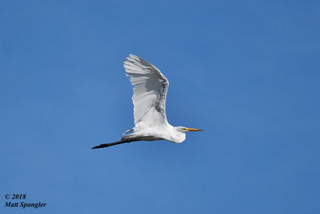Jordan Lake Waders #4
- Matt Spangler
- Aug 13, 2018
- 4 min read
This year, the mudflats on Jordan lake emerged early and didn’t stay for long. Ideal for wading birds, less so for shorebirds or early dabbling ducks.

My favorite time of year for Jordan Lake birding got off to a great start, with an early/mid-summer drought causing the lake levels to drop about a month earlier than normal. As the lake steadily lowered, I braved the heat in my kayak in search of post-dispersal wading birds. Along with the typical Great Blue Herons and the expected Great Egret, this first stretch of birding (late-June through mid-July) was punctuated with a few less common species, including Black-crowned Night-Heron (adults and juveniles seen on 4 occasions, suspected breeders), Yellow-crowned Night-Heron, and not one, not two, but THREE Roseate Spoonbills I found! This was a big year for spoonbills, as other birders found other spoonbills at other inland lakes and ponds, in singles or doubles. However, I don’t think anyone has ever before seen 3 spoonbills together in the interior of NC. The trio stuck around a couple of weeks, so many birders got to see them. In future years, this may be a more commonplace occurrence.
By late July, the lake was 2 feet below normal, providing excellent shallows and some emergent mudflats just in time for the bigger waves of post-breeding wader dispersal and the beginnings of shorebird migration. Both the diversity and numbers of wading birds were way higher than I’ve previously experienced on Jordan. By mid-July a lot of other birders were also covering the Jordan Lake mudflats, and more good eyes = more good birds found. Here are some highlights: over 200 Great Egrets in one location; large numbers of Little Blue Heron (including a handful of adults), some Snowy Egrets (not a guarantee each year), 2 Tricolored Heron (very uncommon); a CATTLE EGRET that I found (very, very unexpected), a GLOSSY IBIS (very, very unexpected) found by another birder, and the aforementioned Night-Herons and Spoonbills. On one particularly productive night (dubbed the “wader party”), myself and three other birders managed to see 8 wader species, a decent amount of shorebirds, and the spectacular migration of hundreds (thousands?) of Purple Martins.
The mudflats that started emerging in late-July also created decent habitat for early migrant shorebirds, including the usual suspects plus a handful of slightly less common species (Short-billed Dowitcher and Semipalmated Plover probably being the best). But 8 species total was pretty abysmal compared to last year’s 20 species. Why the discrepancy?
And then came the flood. The ideal lake conditions came to an abrupt halt following a spate of heavy rains in early August, which caused the lake to rise 6 feet in roughly a week. This eliminated the possibility for mudflats throughout the duration of peak shorebird migration (and the later dabbling duck migration), which was a huge disappointment. However, as a silver lining, the higher lake levels flooded the beaver dams separating lake from marsh, allowing kayak exploration of the marshes. I made a few trips to different marshes, testing my hypothesis that some wading birds would stick around and move from the lake shallows (now gone) to the marshes (where the water level would be more stable). On at least one visit to the White Oak Creek marsh, I was correct, and saw a good range of the aforementioned species. I also managed to see an Anhinga at New Hope Creek previously found by others. Birds aside, exploring flooded marshes by kayak is an enriching experience that isn’t available every year, so I took full advantage of the opportunity.
Overall, this was a front-loaded summer/fall on Jordan Lake, highlighted by the best showing of waders in my experience. In total, I saw 11 different species of wading birds (a personal record, compare last year’s 7), and other birders saw 2 additional species (Wood Stork and White Ibis), resulting in 13 different wading birds reported on Jordan Lake this season. The later rise in lake levels (and disappearance of prime shallows and mudflat habitat) was disappointing, but not unexpected based on historical rainfall patterns. Maybe next year will be a better year for shorebirds.
Summary:
17 trips from late June through mid-August: 8 to New Hope, 1 to Morgan, 2 to White Oak, and 2 to Overcup. Generally by kayak early and late in the season, and scoping from shore during the more productive middle
8 species of shorebirds, 11 species of waders, no migrant ducks.
Low lake levels in July gave rise to shallows and small mudflats, but lake flooded early-August never to drop below normal again.
Species Lists (1st number: number of occasions seen; 2nd number: max number of individuals):
Shorebirds:
Semipalmated Plover (1/1)
Killdeer (11/50)
Least Sandpiper 2/7)
Pectoral Sandpiper (1/8)
Semipalmated Sandpiper (1/1)
Short-billed Dowitcher (1/1)
Spotted Sandpiper (3/11)
Solitary Sandpiper (2/3)
Waders:
Great Blue Heron (16/30)
Great Egret (13/205)
Snowy Egret (3/1)
Little Blue Heron (4/11)
Tricolored Heron (4/2)
Cattle Egret (1/1)
Green Heron (5/1)
Black-crowned Night-Heron (4/4)
Yellow-crowned Night-Heron (1/1)
Glossy Ibis (1/1)
Roseate Spoonbill (4/3)































